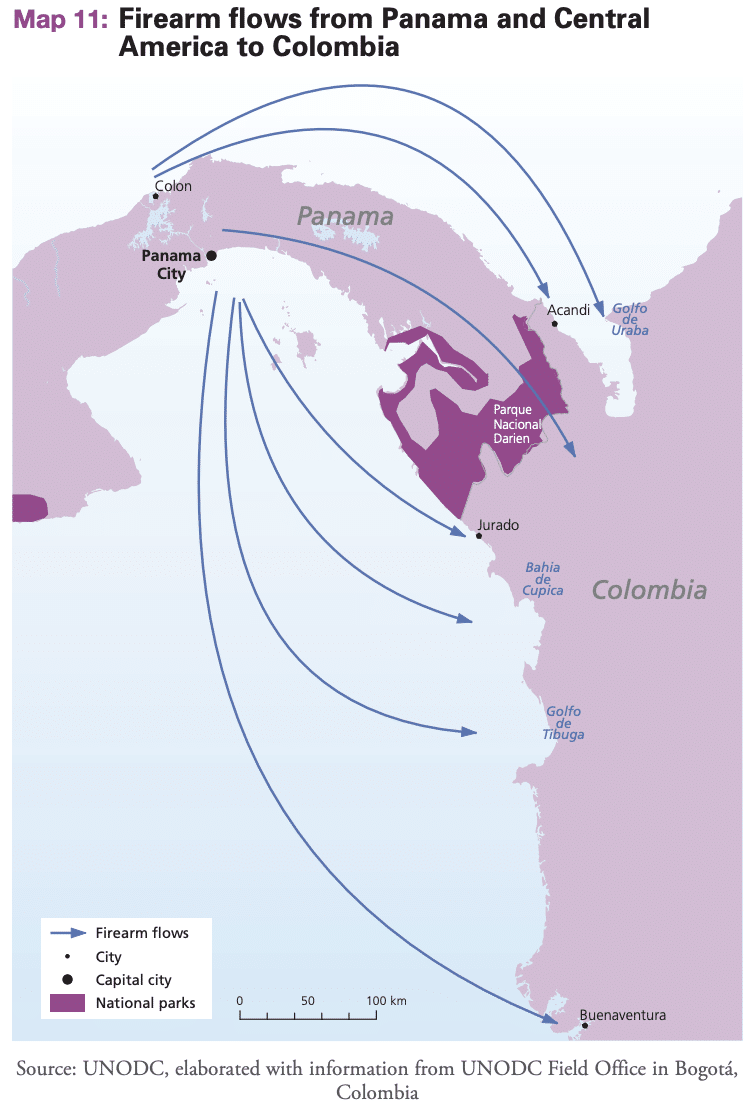Officials in Panama have ended a nearly decade-long ban on the importation of firearms, a move that could end up benefiting traffickers and corrupt officials at a time when the Central American nation’s murder rate is on the rise.
President Laurentino Cortizo and Security Minister Rolando Mirones announced the decision to let a 2011 law expire that limited the amount of firearms importers could receive per shipment in a January 21 press release.
The law restricted importers to 200 firearms per shipment and 400 annually, according to Isaac Brawerman from Panama’s Association of Gunowners (Asociación Panameña de Propietarios de Armas — APPA), EFE reported. Before the law on weapons imports went into effect, importers were able to receive as many as 4,000 firearms in a single shipment, according to Brawerman.
SEE ALSO: Panama News and Profile
The move comes amid an uptick in the country’s murder rate. Last year closed with 472 homicides, 74 percent of which were committed with firearms, according to data from the Attorney General’s Office. This marked a 7.5 percent increase from the 439 homicides that were tallied in 2018.
Minister Mirones claimed earlier this month that the majority of Panama’s homicides are the result of disputes between gangs, a dynamic that could grow worse amid the loosening of firearm regulations and a possible increase in the number of weapons in circulation.
InSight Crime Analysis
It’s hard to see the logic behind easing restrictions on firearms imports in Panama at a time when murders are climbing, especially considering that such weapons have long been a driving force behind violence in Latin America and the Caribbean — one of the most homicidal regions in the world.
Panama has in the past been identified as an important hub in the regional arms trade, according to a 2012 threat assessment from the United Nations Office on Drugs and Crime (UNODC). Its geographic location makes it a natural destination for weapons leaving the United States, where gun laws are lax, and traveling through Central America. From Panama, the guns are then moved out of the country and often south into Colombia.
(Map courtesy of UNODC)
Firearms from Central America’s civil wars or smuggled from security forces are also frequently trafficked. These weapons often wind up in the hands of the region’s criminal groups due to corrupt officials and weak oversight.
Indeed, in January of this year, Panamanian prosecutors announced that they would be filing arms trafficking charges against the former director of the country’s Public Security Directorate (Dirección Institucional de Asuntos de Seguridad Pública – DIASP), Ovidio Fuentes, for allegedly importing weapons and munitions illegally from the United States to then resell at marked-up values, La Prensa reported.
Fuentes and other former DIASP officials reportedly altered firearm permits to show that the weapons were purchased in compliance with the 2011 law, when the firearms had in fact been purchased between 2016 and 2017. In accordance with the previous ban, only authorized security personnel were allowed to import weapons, and DIASP officials were responsible for providing the proper permits and certifications for such firearms.
Authorities in Panama have not yet provided more details on the new regulations, but the move to reopen weapons imports risks exacerbating the problem of criminal groups obtaining firearms. A proposed easing of gun laws in countries like Brazil has faced similar criticism.


